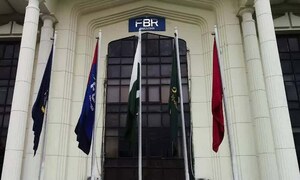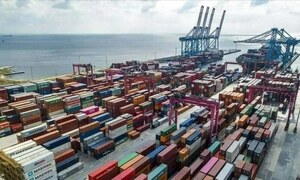The telecom sector attracted $ 494.4 million as Foreign Direct Investment (FDI) which was 32 percent of total FDI in the country during last year.
Chairman Pakistan Telecommunication Authority (PTA), Major General (Retd) Shahzada Alam Malik in a briefing recently, said that this vital sector of the economy remained one of the major contributors in government revenues with Rs 171 billion last year. The government collected Rs 20.5 billion as General Sales Tax (GST) and Central Excise Duty (CED). PTA also deposited Rs 27.9 billion to the national exchequer in 2003.
The telecom sector has tremendous potential for growth and investment and has huge un-tap market. Therefore the government declared the sector as the priority area in the year 2004 in its poverty reduction strategy.
Major steps have been taken for the growth of this sector over the years. Exclusivity of PTCL for basic telephony has been abolished and licenses have been issued to private sector.
Pakistan Telecommunication Authority (PTA) has also introduced incentives to flourish the existing businesses in the telecom sector, resultantly the overall teledensity in the country has reached 13.67 per cent in August 2005 as compared to 4.31 percent in June 2003, showing a growth of 217 percent over the last two years. The annual gross revenues of listed telecom companies have increased considerably over the years.
Cellular mobile services commenced since 1990s in Pakistan, currently there are six mobile operators working in the sectors including Paktel, Instaphone, Mobilink, Ufone and foreign based companies; Telenor and Al-Warid.
Telenor of Norway and Warid Telecom of UAE were issued cellular licences by the PTA @ $ 291 million each in open, fair and transparent auction on 14th July 2004. The step was taken keeping in view the ever-increasing demand for mobile phones in the country.
These licences were issued under the first-ever mobile policy announced by the government of Pakistan on January 28, 2004.
By the end of August 2005, total cellular subscribers reached 15.5 million, showing a growth rate of 209 percent. On the other hand currently, 3.3 million fixed lines are available with a teledensity of 3.43 per cent.
Wireless Local Loop (WLL) service is also getting popularity as including PTCL, four companies have launched their commercial operations. The WLL has around 323931 subscribers and the service is presently available in more than 135 cities across the country.
PTA is giving priority to spread telecom services in four provinces. The Telecom Forums is an effort in this direction. PTA has been conducting Forums to interact with the telecom consumers, service providers, governments of provinces and telecom experts to further improve the services.
The Internet growth in the country is very fast. In 1996, there were only 10 Internet service providers (ISPs). Till June 2005, 273 ISP licenses have been issued by PTA and there are over 2 million Internet subscribers in the country.
Over 1,900 cities and towns have Internet accessibility in the country. There are around 48,268 villages in the country out of which only 16,353 villages have telecom access.
Therefore, only 34percent of rural areas are provided with telecom access whereas 66percent of rural areas are un-served which is a great challenge for PTA. However, PTA is taking necessary steps to expand telecom facilities in remote areas of the province. Under the deregulation policy, Universal Service Obligation Fund has been created to develop telecom facilities in rural areas. This fund will be utilised in consultation with provincial government.
Mobile operators have been allowed to establish mobile PCOs in the areas where fixed line telephone services are not available. Introduction of wireless technology (WLL) has paved way to the extension of telecom facilities to far-off areas. A project has also been prepared to establish community-based tele-centres where telecom facilities will be shared by the community.
FOREIGN DIRECT INVESTMENT:
Foreign Direct Investment is considered a driving force for globalisation in every region of the world and the rise of the foreign investment in services sector is creating new source of competition in developing countries.
Attracting Foreign Direct Investment is the top priority of the current government in Pakistan, which now allows foreign investment on a repatriable basis in the services sector of which telecommunication is one.
Government of Pakistan introduced several measures to attract more foreign investment in the services sector generally and particularly in the telecom sector.
In order to attract foreign investment the Government reduced the minimum amount of foreign equity required from $0.5 million to $0.3 million in the year 2000 for all activities in the services sector. In the year 2004 Government further reduced the minimum amount of foreign equity requirement from $0.3 million to $0.15 million. Since the telecom sector has been declared as an industry in the year 2004, for this sector there is no minimum requirement of the foreign equity to start the business in the telecom sector.
BR100
11,821
Decreased By
-45.2 (-0.38%)
BR30
35,734
Increased By
36.3 (0.1%)
KSE100
113,580
Decreased By
-568.6 (-0.5%)
KSE30
35,742
Decreased By
-210.3 (-0.58%)

























Comments
Comments are closed.